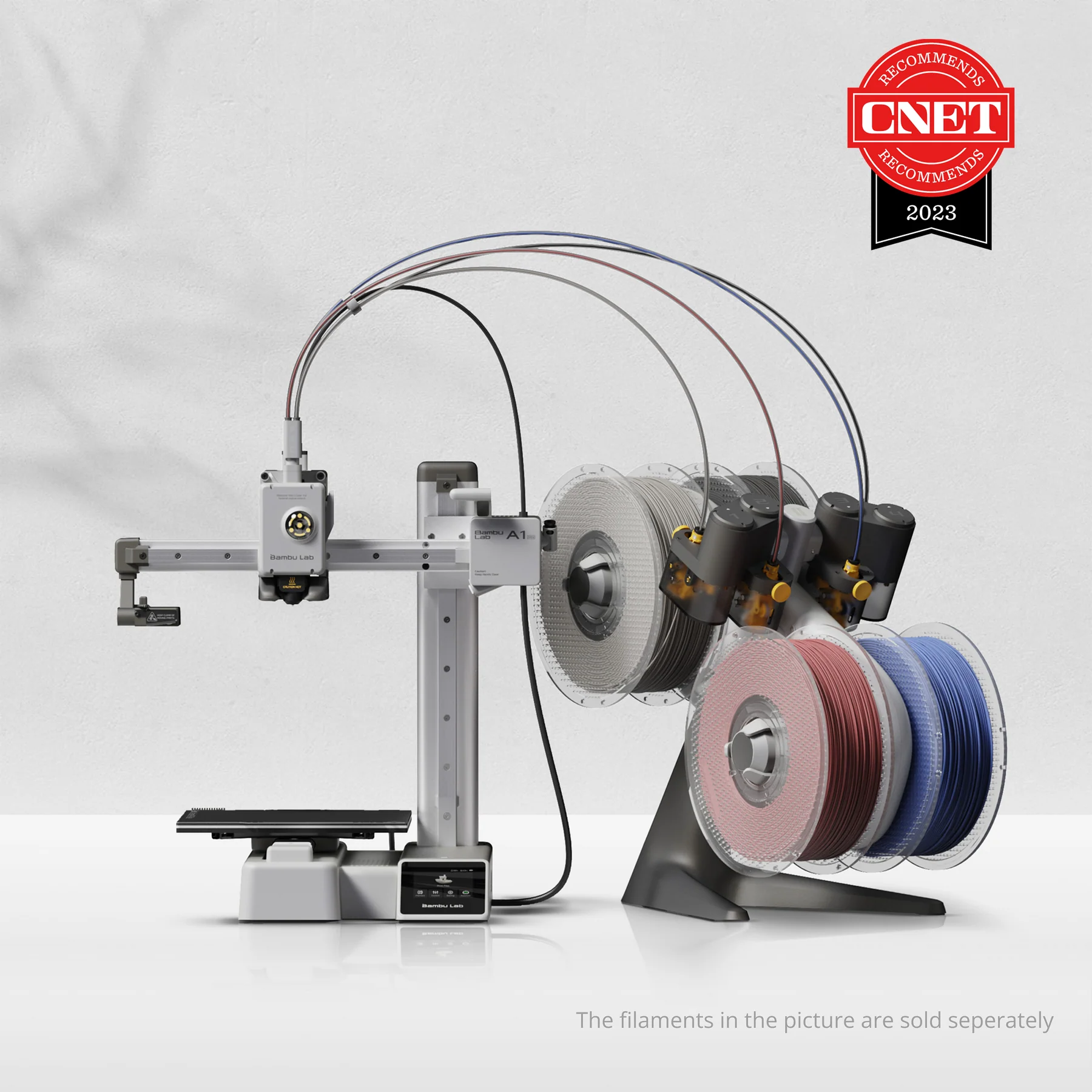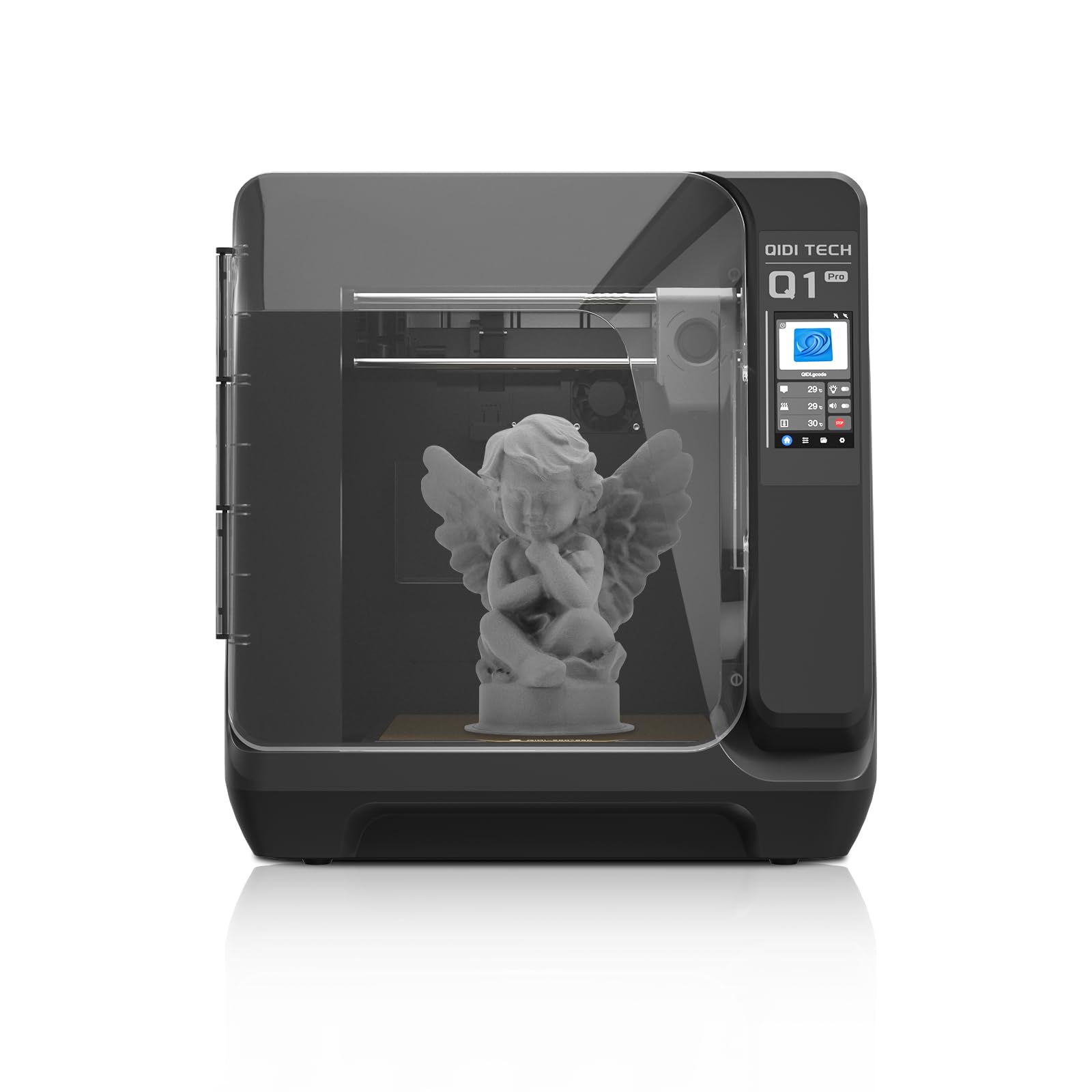Compare A1 Mini vs Q1 PRO
Comparison between the best 3D printers
Choose the best 3D printer at the best price. The cheapest 3D printers are here.
Buy a 3D printer here with 3D Fila.
 |
 |
|
| Model | A1 Mini |
Q1 PRO[BUY Q1 PRO] |
| Printing Material | Filament | Filament |
| Buy Filament for Bambu Lab A1 Mini | Buy Filament forQIDI Q1 PRO | |
| Estimated price | $549,00 | $449,00 |
| Manufacturer | Bambu Lab | QIDI |
| Release Year | 2023 | 2024 |
| Print Volume [mm] | 180x180x180 | 245x245x245 |
| Printer Size [mm] | 315x347x365 | 467x477x489 |
| Weight [kg] | 5,5 | 20 |
| Power Loss Recovery | YES | YES |
| Enclosed printer | NO | YES |
| Bed Leveling | Automatic | Automatic |
| Filament End Sensor | YES | YES |
| Bed type | Heated | Heated |
| Power supply system | Direct Drive | Direct Drive |
| Standard nozzle | 0,4 | 0,4 |
| Maximum Nozzle Temperature [°C] | 300 | 350 |
| Maximum Bed Temperature [°C] | 80 | 120 |
| Maximum printing speed [mm/s] | 500 | 600 |
| Filament holder | YES | YES |
| Camera for supervision | YES | YES |
| Recommended filaments | PLA, PETG, TPU, PVA | PLA、ABS、ASA、PETG、TPU、PC、PA、PA-CF、PET-CF、PAHT-CF etc. |
| Recommended slicers | Bambu Studio, Super Slicer, Cura, Prusa Slicer, Orca | QIDI Slicer/Cura/Simplify 3D/ORCA/PRUSA Slicer |
| Maximum Resolution [mm] | 0,1 | 0,1 |
| Processor | 32-bit Silenciosa | Cortex-A53,64-bit Processor |
| Display | Touchscreen 2,4'' | Touchscreen 4,3'' |
| Power Supply | 150 W | 350 W |
| Connectivity | Wifi, Bambu bus, Cartão SD | WiFi/USB Flash Drive/Ethernet Cable |
| Operating systems | Windows, Linux, Macbook | Windows, Linux, Macbook |
| Date of registration in the system | 2024-04-10 | 2024-07-09 |
| Release date | 2023 | 2024 |
| Extra features | The Bambu Lab A1 Mini stands out not only for its impressive speed and automatic calibration, but also for its multi-color printing capability thanks to AMS Lite. This innovative system makes multi-color printing easy, making it accessible to everyone. AMS Lite, specific to the A1 Mini, supports up to four different materials simultaneously, providing creative freedom without complications. With comprehensive sensors for energy monitoring and recovery, a camera for timelapses and Wi-Fi control, the A1 Mini and AMS Lite together offer an intuitive and advanced 3D printing experience, ideal for materials such as PLA, PETG and TPU, and designed for simplicity and fast maintenance with quick-change nozzles. | The QIDI Q1 Pro 3D printer stands out for its Core XY structure and heating chambers that reach up to 60ºC, ideal for advanced materials such as ABS and Nylon. It features Klipper firmware, an automatic leveling system, a high-flow extruder with a double metal nozzle and a hotend that reaches 350ºC. It offers connectivity via Wi-Fi, USB and Ethernet, as well as a 1080p camera for remote monitoring and an intuitive touchscreen for easy operation. |
| Support for multiple colors and materials (AMS and CFS) | YES | NO |
Notes * |
||
| Cost-benefit | 7 / 10 | 8 / 10 |
| Hardware | 4.2 / 10 | 4.8 / 10 |
| Tela | . | . |
| Print volume | 3 / 10 | 3 / 10 |
| Performance | 4 / 10 | 5 / 10 |
| [BUY Q1 PRO] |
Conclusion |
| In conclusion, the comparison between the Bambu Lab A1 Mini and the QIDI Q1 Pro reveals distinct advantages and considerations for potential buyers. The A1 Mini, while more expensive, showcases advanced features such as multi-color printing capabilities, a compact design, and a user-friendly automated experience. It excels in speed and ease of use for standard materials, making it suitable for hobbyists and entry-level users looking for simplicity and efficiency. On the other hand, the QIDI Q1 Pro comes at a lower price point and offers a larger print volume, making it more versatile for those interested in sophisticated 3D printing applications. Its Core XY structure, higher maximum temperatures, and ability to handle a wider range of advanced materials position it as a solid choice for experienced users seeking greater performance and material flexibility. Ultimately, the choice between the two depends on the user's specific needs—whether they prioritize advanced features and ease of use or a lower cost with enhanced material capabilities and a larger build size. The QIDI Q1 Pro's strong performance and cost-benefit ratio make it appealing for serious enthusiasts, while the A1 Mini's innovative features might attract those who value convenience and creative options. Each printer has its strengths, catering to different user profiles within the 3D printing community. |

